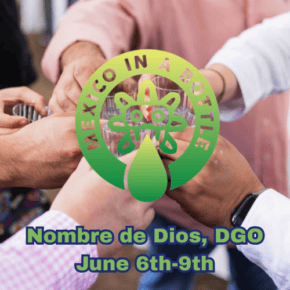It’s that time of year again. Our feeds all blow up with mentions of tequila’s smoky cousin, special cocktails that stretch the boundaries of credulity, and all sorts of Mexican oriented drunkenness. While bartenders privately lament the lack of manners they enjoy the tips.
We’re not immune to the lure of Cinco de Mayo, hey, it’s a teaching opportunity! Hence our involvement in the San Francisco Academy of Science’s Thursday evening event. I’ll have a presentation on “Why Mezcal, Why Now” along with Raza Zaidi of Wahaka, Elisandro Gonzalez of Tosba, and Dr. Blake Simmons on agave’s use as biofuel. Oh, and there will be cocktails as well!
If you can’t make it, there are sure to be tons of events in your zip code but first we want to give you a primer on what Cinco de Mayo’s background because the true meaning of the holiday is infinitely more insidious and complex than most people make out. And, in many ways it’s the story of our era.
The History
Look, the history of Cinco de Mayo is pretty simple and it’s actually incidental to what’s going to happen this Thursday. On May 5th, 1862 a Mexican army defeated a French army in the Battle of Puebla. This was immediately celebrated as a demonstration of Mexican prowess and as a blow against imperialism. The fact the French returned and took over the whole country the following year doesn’t often figure into that celebratory narrative, nor do many other more fascinating story lines, least of all the fact that even though Cinco de Mayo continues to be a state holiday in Mexico, almost no Mexicans actually celebrate it. That’s the way things went until 1989.
Yes Virginia, there really is a Cinco de Mayo!
In 1989 the Berlin Wall finally crumbled foreshadowing the disintegration of the Soviet Union. That’s also the year that the Texas distributor of Corona was struggling with a rumor campaign that the beer had piss in it. We’re not sure if what happened next has anything to do with that, to solve that question we’ll need to launch an oral history of beer marketing in America, perhaps we could interest HBO in that project (call us, we’re ready to work on that one!).
The distributor, the Gambrinus Group, launched a campaign associating Corona with Cinco de Mayo. As far as we can tell it wasn’t an instant success but it did plant the seeds for the massive alcoholic free for all that we have today where demand for pretty much anything else that you could stereotype as Mexican suddenly spikes including Corona, avocados for guacamole, tequila, salsa, straw sombreros – you name it. If it fits that narrow idea of Mexicanness, it sells during the week of Cinco de Mayo. At least it sells north of the border because Mexicans still don’t really do much with the holiday.
Manufactured consent, and demand
So, really this is a manufactured holiday which, come to think of it, is the case with most of our holidays. But the genesis of Cinco de Mayo in 1989 isn’t all down to dumb luck. Sure, I really doubt the Gambrinus Group (call us and tell us if we’re wrong!) did the market research to tell them that linking Cinco de Mayo with Corona was a world beater. But all the foundations for success were already laid.
First, 1989 was the transition between a Cold War era where there were some standards for corporate behavior and more divided nation states. After that point capitalism was unleashed in all its unregulated forms globally. It’s a convenient date with meaning because the Eastern Bloc started its migration west, China was in the midst of its of paroxysm of change with Tiananmen and the continued sweep to capitalism, while we here in Capitalism Heartland USA really got going on the deregulation and open trade front in a big way right afterwards. NAFTA would be signed into law a short five years later.
Underlying all of this was a huge demographic time bomb. Demographers knew that the picture of a majority white United States was about to change, it was going to become majority minority sometime in the near future and a huge chunk of that minority would be Latinos, especially Latinos of Mexican descent. Everyone wondered how this would change politics given the ongoing Republican pursuit of the Southern Strategy, a culture that seemed in the midst of a transformative moment, and the underlying racial tensions in the United States.
In retrospect it was the perfect moment to launch an astroturf holiday based on the idea of Mexican pride. Mexicans in the United States could look at it as a connection with their homeland while their fellow citizens could use it as a good excuse to party like their ideas of Mexico. In short: Capitalism and cultural identity reflected a very real shift in the role of capital and cultural identity in the United States. Man, there’s a great graduate thesis here, which has probably already been written, and an awesome pop culture history which a lot of people have already taken a shot at. One of the most astute is the OC Weekly’s Gustavo Arellano who has written a great introduction to the whole phenomenon through the lens of how fast Mexican food gobbled up burgers and fries; it’s called Taco USA: How Mexican Food Conquered America. To put a point on his argument, he calls Cinco de Mayo Gringo de Mayo.
And he’s right, the holiday really manages to pack so much into a single day. There’s the sweep of the complicated relationship between the US and Mexico, immigration, latent and explicit racism, the dynamic of the late-20th century, demographic change, a cultural tsunami. It’s all there wrapped up in a sombrero.
Drink the Corona, skip the mezcal
We do have standards in this blog. One of them is that we always have to write about mezcal so here’s the big question: Given that mezcal is the current paragon for Mexican cultural authenticity shouldn’t we avoid drinking it on Cinco de Mayo and associate it with a holiday that Mexicans actually hold near and dear? Susan has nominated Mexican Independence Day as the true embodiment of mezcal. We’ll leave that up to you.













Nice post!